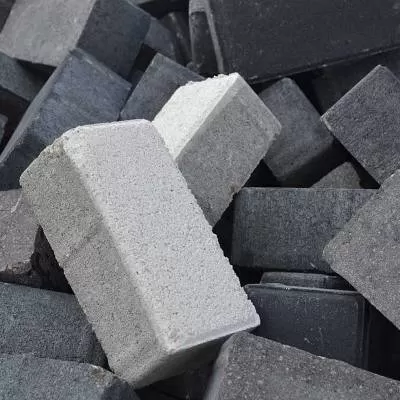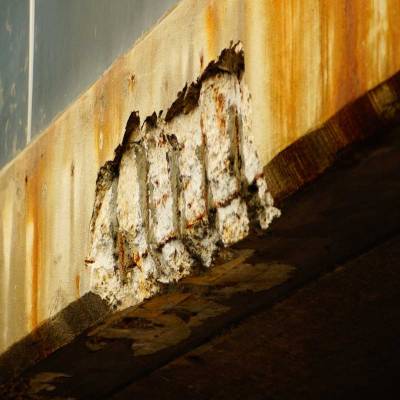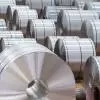- Home
- Building Material
- Concrete
- Here's how corrosion inhibitors can be used to revive concrete structures!

Here's how corrosion inhibitors can be used to revive concrete structures!
Patching, overlaying and rehabilitating chloride-contaminated and corrosion-damaged concrete structures have become a major part of state construction and maintenance programmes. <br /> <br /> In many cases, only portions of a structural element are contaminated or damaged owing to corrosion, allowing the element to be repaired rather than replaced. Conventional repair techniques usually include removing chloride-contaminated and deteriorated concrete and placing new concrete in the form of patches and overlays. Although new concrete generally restores a more passive environment, corrosion of the original reinforcing steel often continues and corrosion often accelerates adjacent to repaired areas because of differences in the chloride content in the adjacent old and new concrete. Corrosion further deteriorates the concrete element and significantly reduces the service life of the repaired structure.<br /> <br /> Various types of corrosion inhibitors have been developed and marketed to mitigate corrosion in newly rehabilitated structures. When physical damage is repaired, these materials are usually incorporated into the repair procedure by applying them to the surface of the original concrete and allowing them to penetrate before patching, by including them as an admixture in the patch material, or both. <br /> <br /> These applications seem benign compared to other corrosion protection methods and add relatively little work to conventional repair activity. <br /> Initial costs are low. <br /> <br /> <span style="font-weight: bold;">Actual application of inhibitors</span><br /> However, the question of whether inhibitor performance meets expectations with minimal side-effects remains to be answered. Corrosion inhibitors are designed to inhibit corrosion of reinforcement by forming a barrier around the reinforcement, by reducing the permeability of the concrete, and by reducing the oxidation reactions on the surface of the reinforcement. These design functions seem reasonable when inhibitors are used in chloride-free concrete used in new construction. On the other hand, these design functions do not seem possible when inhibitors are used in the repair and rehabilitation of chloride-contaminated concrete. <br /> <br /> In situations where the reinforcement is corroding because of the presence of chlorides, the inhibitor would have to displace the chlorides around the bar in order to form a chloride-free barrier around the reinforcement. <br /> <br /> In addition, an inhibitor that reduces the permeability of the concrete may reduce the quantity of new chloride that reaches the reinforcement. However, if sufficient chloride is present at the reinforcement to cause corrosion, the inhibitor will not provide a benefit. Finally, anodic inhibitors can cause accelerated corrosion and pitting if used in insufficient concentrations. Considering the non-homogeneous nature of concrete, it is not reasonable to expect that the reinforcement will be successfully coated with inhibitor uniformly or in sufficient concentration to prevent or reduce corrosion. <br /> <br /> In fact, the use of corrosion inhibitors in repair concrete and topical applications to chloride-contaminated concrete surfaces could promote corrosion. <br /> <br /> <span style="font-weight: bold;">Review of initial works</span><br /> In the past 15 years, corrosion-inhibiting admixtures (CIAs) in concrete have received increased attention as an alternative corrosion protection system for new construction. CIAs are typically classified as anodic, cathodic, inorganic and organic. Calcium nitrite is an anodic, inorganic inhibitor frequently used in concrete in new construction. Admixtures of ester-amine and alcohol-amine are organic inhibitors. Both inorganic and organic admixtures for concrete and topically applied corrosion-inhibiting products have been introduced for concrete repair and rehabilitation projects.<br /> A Transportation Research Information Systems (TRIS) search indicated that the number of reports on the use of corrosion inhibitors in transportation applications is increasing. Unfortunately, most reports are concerned with the use of CIAs in concrete used in the construction of new structures. Further, most of the reports provide details on the effects of the admixtures on the physical and mechanical properties of the concrete but little on corrosion protection. Service life extension estimates are based on limited laboratory evaluations. The bulk of performance data on the use of inhibitors in rehabilitation applications comes from laboratory tests conducted by product manufacturers using simulated environments.<br /> <br /> <span style="font-weight: bold;">Inhibitors classification</span><br /> Corrosion inhibitors can be chemicals, either synthetic or natural, and could be classified by their chemical nature, organic or inorganic. Another way in which inhibitors are classified is as per the mechanism of action, anodic, cathodic or a anodic-cathodic mix and by adsorption action, or as oxidants or non-oxidants. <br /> <br /> <span style="font-weight: bold;">Anodic inhibitors</span><br /> Anodic inhibitors (also called passivation inhibitors) act by reducing anodic reaction; that is, blocking anode reaction and supporting the natural reaction of passivation metal surface, also, owing to the forming of a film adsorbed on the metal. In general, the inhibitors react with the corrosion product, initially formed, resulting in a cohesive and insoluble film on the metal surface. Given below is a potentiostatic polarisation diagram of a solution with anodic behaviour inhibitor. <br /> <br /> The anodic reaction is affected by the corrosion inhibitors and the corrosion potential of the metal is shifted to more positive values. As well, the value of the current in the curve decreases with the presence of the corrosion inhibitor.<br /> <br /> For the anodic inhibitor to take effect, it is important that inhibitor concentrations are high enough in the solution. <br /> <br /> An inappropriate amount of the inhibitor affects the formation of the film protection, because it will not cover the metal completely, leaving sites of the metal exposed, thus causing localised corrosion. Some examples of anodic inorganic inhibitors are nitrates, molybdates, sodium chromates, phosphates, hydroxides and silicates.<br /> <br /> <span style="font-weight: bold;">Organic inhibitors</span><br /> Organic compounds used as inhibitors occasionally act as cathodic, anodic or together, as cathodic and anodic inhibitors; nevertheless, as a general rule, they act through a process of surface adsorption, designated as a film forming. Naturally, the occurrence of molecules exhibiting a strong affinity for metal surface compounds shows good inhibition efficiency and low environmental risk.<br /> <br /> The figure below shows a theoric potentiostatic polarisation curve; the effect of the solution containing an organic inhibitor on the metal presents anodic and cathodic behaviour. <br /> <br /> After the addition of the inhibitor, the corrosion potential remains the same, but the current decreases from Icor to I'cor.<br /> <br /> <span style="font-weight: bold;">Applications of inhibitors</span><br /> Corrosion inhibitors are found in various industrial applications from concrete to the oil industry. <br /> <br /> In the concrete industry, they are used to improve the durability of reinforced concrete structures, which are impaired owing to high alkalinity, mixed with cement or concrete paste. An example is phosphate ion. <br /> <br /> <span style="font-weight: bold;">In conclusion </span><br /> Inhibitors are a great method of preventing corrosion and are easy to apply. The knowledge of the method of the action facilitates the choice of inhibitors, improves efficiency, and avoids impairment of the process and any side-effects. It is also important to ascertain the subsequent effects of the inhibitor on the environment. In fact, the search for environment-friendly inhibitors has shown excellent results, outperforming conventional inhibitors.<br /> <br /> The global corrosion inhibitors market is expected to reach $7.55 billion by 2020. Corrosion inhibitors form an important part of the water treatment chemicals market and growing regulatory pressure for water treatment is expected to boost market demand. As per Radiant Insights, the global corrosion inhibitors market demand was 4,659.8 kilo tonne in 2013 and is expected to reach 6,340.7 kilo tonne by 2020, growing at a CAGR of 4.5 per cent from 2014 to 2020. Organic corrosion inhibitors were the most widely used product with demand exceeding 3,300 kilo tonne in 2013. They are preferred over inorganic inhibitors as they are non-toxic, making them feasible for use in water treatment and the paints and coating industry. <br /> <br /> Asia Pacific was the largest market for corrosion inhibitors, accounting for 38.78 per cent of market volume in 2013. Industrial growth in automobile, chemicals and the oil and gas sector is expected to further boost demand for corrosion inhibitors in the region.<br /> <br /> <span style="font-weight: bold;">About the author: <br /> DR HM RAJE, Director, Raje Structural Consultants,</span> has been involved in the structural designing of hotels, international convention centre, high-rise buildings, multi-storey towers, malls, hospital and residential townships, design of bridges, factory building and plants, etc. He is currently on the panel of Bureau of Indian Standards; Construction Practice & Safety (CED 46:P11).<br />
























